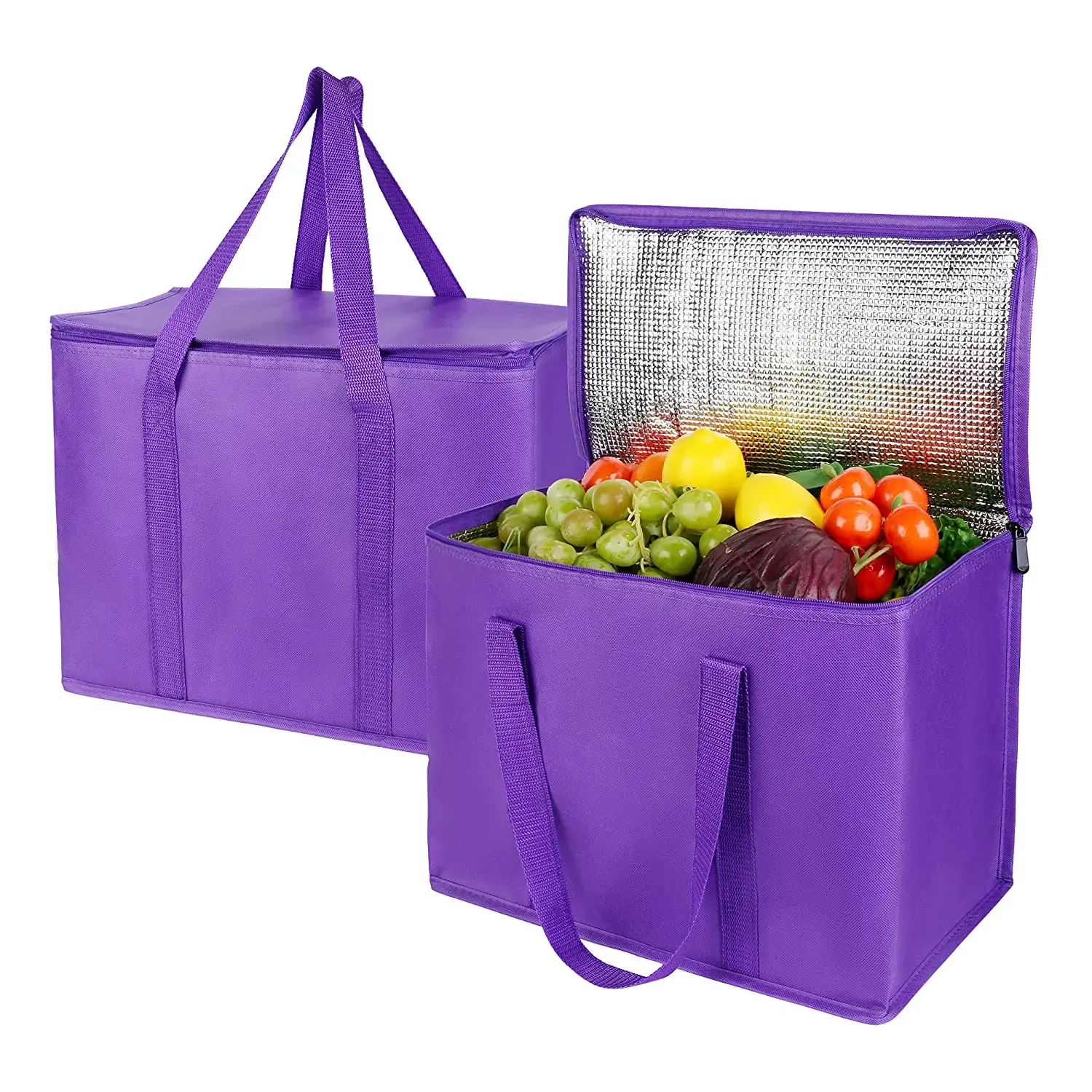Design and Aesthetic Differences in Insulated Bags for Food
The design of insulated bags significantly influences their durability and user satisfaction. Innovative features such as hinged openings, reinforced stitching, and waterproof coatings enhance longevity without compromising functionality. For instance, hinged openings provide easy packing and unpacking, while reinforced stitching ensures the bag remains robust under various conditions. Incorporating materials like corrugated linings for pressure distribution and waterproof coatings for environmental protection are crucial. These design elements improve the user experience by making the bag more convenient and versatile, while also extending its lifespan, making it a more sustainable choice.
Aesthetic Features Boost Consumer Satisfaction
Aesthetic features play a crucial role in enhancing consumer satisfaction. Playful designs catch the eye and evoke positive emotions, making the product enjoyable to use. Eco-friendly materials not only reduce the environmental impact but also align with conscious consumers' values, enhancing trust and satisfaction. Customization options allow customers to personalize their bags, adding a personal touch and increasing engagement. Interactive elements, such as temperature-indicating strips or compartmentalized designs, improve functionality while adding layers of engagement and fun, significantly boosting satisfaction. Matching the aesthetics with the brand's personality makes the product feel more desirable and unique, aligning with consumer preferences and enhancing overall satisfaction.

Functionality-Driven Design Elements in Insulated Bags
Functionality-driven design elements enhance the performance and sustainability of insulated bags, particularly in food delivery applications. Thermal insulation materials such as reflective foils or multi-layered structures provide effective temperature regulation, while eco-friendly options like plant-based foams contribute to sustainability. Durability and reusability are also important, with sturdy, washable materials promoting longer use and reduced waste. Design features like easy-closing mechanisms, adjustable compartments, and freshness indicators improve user convenience and contribute to environmental sustainability by reducing food waste. Integrating smart technologies, such as temperature sensors and RFID chips, provides real-time data for food safety and freshness, though challenges in cost, battery life, and data security must be addressed. User feedback mechanisms ensure designs meet real needs, leading to more innovative and practical bags.
Innovations and Unique Designs in Insulated Bags for Food Storage
Innovations in insulated bags for food storage focus on maintaining food quality and safety while enhancing user convenience and comfort. Materials like phase-change materials (PCMs) offer superior thermal management, effectively regulating internal temperatures to prolong freshness. Sustainable materials such as plant-based plastics and recycled fabrics provide eco-friendly alternatives with reduced environmental impact. Smart technologies, including temperature sensors and mobile apps, offer real-time monitoring, ensuring optimal food preservation. Predictive algorithms based on machine learning can further enhance these systems by adapting to user behavior and environmental conditions, leading to more personalized and efficient temperature management. Comfort-focused designs, such as ergonomic handles, breathable fabrics, and adjustable straps, improve the overall user experience. These innovations enhance the convenience of food storage and transport while promoting a more eco-conscious approach.
Cost-Effective Solutions and Eco-Friendly Materials for Insulated Bags
Considering cost-effective solutions and eco-friendly materials for insulated bags, here are the most popular options:
- Recycled PET (rPET): Offers excellent thermal properties at a lower cost compared to traditional materials, reducing the environmental footprint without significant compromise on durability.
- Plant-based insulators (e.g., cellulose or hemp): Provide a natural, biodegradable alternative with a lower carbon footprint, though initial durability and thermal efficiency may be slightly lower.
- Biodegradable cardboard for packaging: Minimizes waste and reduces carbon emissions, offering a sustainable alternative to traditional cardboard, often used in premium, eco-friendly products.
- Solar or wind-powered energy systems: Can significantly reduce energy consumption in production facilities, making the manufacturing process more sustainable and cost-effective in the long run.
- Closed-loop recycling systems: Enhance waste reduction and efficiency by reprocessing materials within the production facility, ensuring a continuous flow of sustainable inputs.
These materials and technologies not only contribute to sustainability but also improve the overall efficiency and user experience of insulated bags.
FAQs Related to Insulated Bags
What materials and design elements enhance the longevity and durability of insulated bags?
Design elements such as hinged openings for easy packing and unpacking, reinforced stitching for robustness, and waterproof coatings for environmental protection enhance the longevity and durability of insulated bags.How do aesthetic features in insulated bags affect consumer satisfaction?
Aesthetic features, such as playful designs, eco-friendly materials, customization options, and interactive elements, boost consumer satisfaction by making the product enjoyable to use, aligning with consumers' values, and increasing engagement.What are some functionality-driven design elements that improve the performance and sustainability of insulated bags for food storage?
Functionality-driven design elements include thermal insulation materials, durable and washable materials, easy-closing mechanisms, temperature sensors, smart technologies, and user feedback mechanisms aimed at maintaining food quality, prolonging freshness, and reducing waste.What innovations are included in modern insulated bags for food storage, and how do they benefit consumers?
Innovations include phase-change materials for superior thermal management, sustainable materials like plant-based plastics and recycled fabrics, smart technologies for real-time monitoring, predictive algorithms for adapting to user behavior, and comfort-focused designs improving overall user experience while enhancing sustainability.What eco-friendly materials are cost-effective and popular for producing insulated bags?
Popular eco-friendly and cost-effective materials for insulated bags include recycled PET (rPET), plant-based insulators like cellulose or hemp, biodegradable cardboard for packaging, solar or wind-powered energy systems for manufacturing, and closed-loop recycling systems to enhance sustainability and efficiency.





